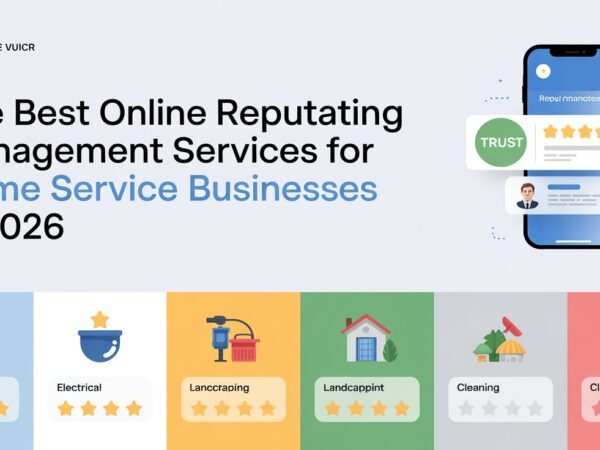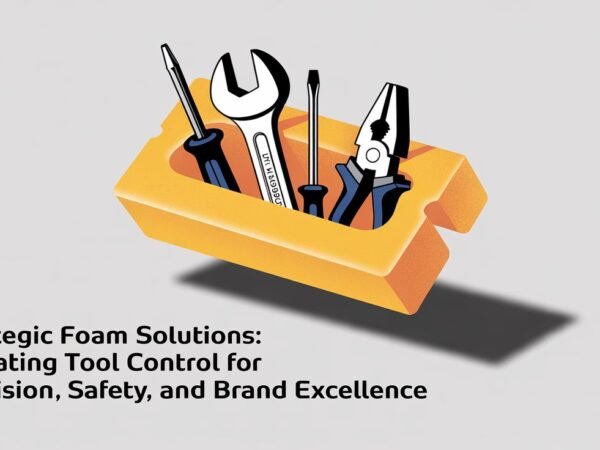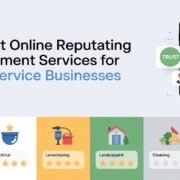Custom CRM solutions are transforming how businesses manage customer relationships. They help companies manage customer interactions, handle data, and improve relationships. While off-the-shelf CRM systems provide standard features, custom CRM solutions can transform your business by fitting your unique processes and goals. Let’s explore the key components, development methods, and benefits of creating a custom CRM solution.
Introduction to CRM Solutions
What is a CRM Solution?
Managers use CRM solutions to manage a company’s interactions with current and potential customers. They centralize customer information for each prospect or customer, improve sales processes, and enhance communication, leading to better customer satisfaction and loyalty.
Why Consider a Custom CRM?
Off-the-shelf CRMs often need help to meet specific business needs. A custom CRM, however, can offer tailored workflows, smooth integration with existing systems, room for growth, and better data security. This tailored approach allows businesses to focus on their unique customer relationship strategies. With CRM systems returning an average of $8.71 for every dollar spent, investing in a custom solution is strategic and cost-effective.
Core Components of a Custom CRM Solution
Essential Features for Every CRM
CRM should include core features like contact management, lead tracking, and sales pipeline visualization. 98% of software buyers rate sales automation as the most essential CRM feature. This highlights the necessity of automating repetitive tasks, allowing teams to prioritize relationship-building.
Designing a User-Centric CRM Dashboard
The CRM dashboard should be easy to use and customizable. It should provide quick insights and aid in decision-making. A well-designed dashboard ensures users can manage tasks, track performance, and monitor critical metrics efficiently.
Advanced Features for Competitive Advantage
Incorporating advanced features like AI-driven analytics, automation, and social media integrations can give you a competitive edge. These features enable predictive insights, streamline processes, and enhance customer engagement.
Step-by-Step Guide to Building a Custom CRM
Initial Planning and Requirement Gathering
The first step in building a custom CRM is identifying your business needs and gathering requirements. This involves mapping out current processes, defining CRM goals, and prioritizing features based on their impact on your business.
Designing the CRM Architecture
Your CRM’s structure should be scalable, secure, and flexible enough to adapt to future needs. This phase includes choosing suitable data structures, ensuring data security, and planning for potential integrations with existing systems.
Agile Development Approach
An agile method allows for iterative development and continuous improvement based on user feedback. This approach ensures that the CRM evolves to meet your business needs, delivering value at every stage.
Selecting the Ideal Technology Stack
Choosing the right technology is crucial for building a robust and scalable CRM. It should fit your existing IT setup and offer flexibility for future upgrades.
Best Practices for CRM UI/UX Design
User-Centric Design Principles
The success of your CRM heavily depends on its ease of use. A user-centric design focuses on creating an intuitive interface, ensuring users can easily navigate the system and find the information they need.
Mobile-First Approach
53% of salespeople reported better CRM data quality thanks to mobile access, while other benefits include increased efficiency (50%) and faster, more informed decision-making (42%). Designing a responsive interface that works well on smartphones and tablets is essential. Prioritizing mobile usability ensures your team can access the CRM anytime, anywhere.
Enhancing User Adoption Through Training and Support
Practical training and support are vital to ensuring that users fully adopt the CRM system. Comprehensive onboarding programs, regular training sessions, and easily accessible support resources can increase user engagement and satisfaction.
Data Management and Security Considerations
Structuring a Robust Data Architecture
A robust data structure is the backbone of any CRM. It ensures that data is organized, stored securely, and easily accessible when needed. This structure supports real-time updates, allowing your team to make informed decisions quickly.
Implementing Strong Security Protocols
As data becomes central to business strategy, ensuring its security is crucial. Implementing end-to-end encryption, multi-factor authentication, and regular security checks can protect sensitive customer information from breaches.
Navigating Compliance Requirements
Compliance with regulations such as GDPR and CCPA is essential to avoid legal penalties. Your CRM should be designed to handle data in a way that meets these legal requirements. This ensures that your business stays compliant while building trust with customers.
Integration and Scalability
Seamless Integration with Existing Systems
Your CRM should seamlessly blend with business tools like email platforms, marketing automation systems, and ERP software. Seamless integration ensures that all your business processes work together efficiently, improving productivity and reducing data silos.
Designing for Scalability and Flexibility
As your business grows, your CRM should also scale up. When designed for scalability, your CRM can efficiently manage increasing data volumes and handle more complex processes, helping it run smoothly without slowing down. A flexible CRM also allows adding new features and modules as needed.
From Development to Deployment
Comprehensive Testing Strategies
Testing is a critical phase in CRM development. Implementing thorough unit, integration, and user acceptance testing ensures that all features work as intended and that the CRM performs flawlessly.
Smooth Data Migration Processes
Moving data from an old system to your new CRM can be challenging. A well-planned migration strategy includes data cleaning, phased migration, and thorough validation. This ensures that data integrity is maintained throughout the process.
Effective Training and Onboarding
Developing role-specific training materials and hands-on workshops can help users quickly adapt to the new system. Effective onboarding ensures that your team is confident using the CRM, leading to higher adoption rates and better use of its features.
Continuous Improvement and Support
Collecting and Acting on User Feedback
Continuous improvement is essential for the long-term success of your CRM. Setting up regular feedback sessions and in-app feedback mechanisms helps you to prioritize and implement necessary adjustments and improvements.
Regular Updates and Feature Enhancements
Keeping your CRM up-to-date with the latest features and improvements is crucial for maintaining its effectiveness. Regular updates ensure that your CRM evolves alongside your business needs, helping you stay competitive in a rapidly changing market.
Measuring Success with KPIs
Tracking the performance of your CRM through key performance indicators (KPIs) helps you measure its success. With CRM systems returning an average of $8.71 for every dollar spent, it’s clear that investing in a custom CRM can produce significant returns, making it a valuable asset for your business.
Conclusion
Building a custom CRM solution is more than just a tech upgrade—it’s a strategic investment in your business’s future. As data becomes increasingly important for business strategy and decision-making, a tailored CRM can provide the competitive edge needed for success in today’s market while delivering a solid ROI.
Are you ready to revolutionize customer relationships and see substantial returns with a custom CRM solution?
Contact Create Bytes today to explore how our expertise can help your business thrive. Explore their custom CRM development services or read more related blogs for further insights into the world of custom software solutions.
Frequently Asked Questions: Custom CRM Solutions
What is a custom CRM solution, and how does it differ from off-the-shelf CRM software?
A custom CRM solution is tailored to a company’s unique business processes and needs. Unlike off-the-shelf CRM software, which offers standardized features, custom CRMs are built from scratch or heavily modified to align perfectly with an organization’s workflow. This customization allows for greater flexibility, scalability, and integration capabilities, ensuring that the CRM fits the business rather than the business adapting to the CRM.
How long does developing and implementing a custom CRM solution typically take?
A custom CRM solution’s development and implementation time varies based on complexity and scope. Typically, it can range from 3 to 12 months. This includes the requirements gathering, design, development, testing, and deployment phases. Smaller projects might be completed in a few months, while enterprise-level solutions can take a year or more. Phased implementations can provide quicker initial results while allowing for ongoing improvements.
What role does data migration play in implementing a custom CRM solution?
Data migration involves transferring customer data from old systems to the new CRM. This process requires careful planning to ensure data accuracy, completeness, and proper formatting. Successful data migration maintains historical customer information, enables continuity in customer relationships, and provides a solid foundation for the new CRM to deliver value immediately upon launch.
Do Read: Protect Your RV: Secure & Convenient Storage Solutions













